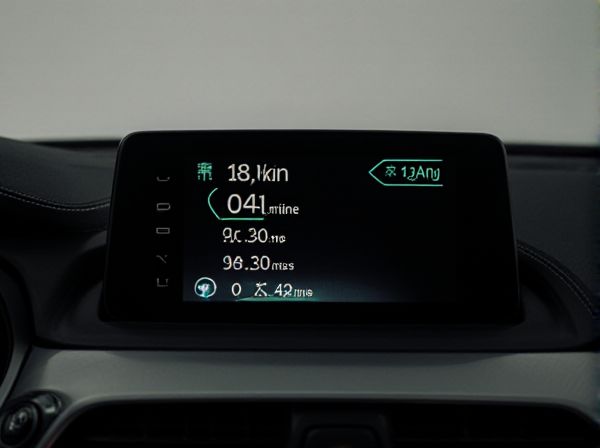
Photo illustration: Monochrome Display vs Color Display
Monochrome displays offer high contrast and clarity, making them ideal for reading text or displaying simple graphics with minimal power consumption. Color displays provide vibrant visuals that enhance user experience through rich, multi-hued images, perfect for multimedia and gaming applications. Your choice depends on whether you prioritize battery efficiency and simplicity or immersive, colorful content.
Table of Comparison
| Feature | Monochrome Display | Color Display |
|---|---|---|
| Visual Clarity | Clear text, limited graphics | High clarity with vibrant graphics |
| Information Density | Basic data, minimal icons | Complex data, multiple icons |
| Power Consumption | Low energy use | Higher energy use |
| Cost | More affordable | Premium pricing |
| Customization | Limited customization | Extensive customization options |
| Day/Night Readability | Good readability | Excellent readability with adaptive brightness |
| User Experience | Functional, straightforward | Engaging, intuitive interface |
Introduction to Display Technologies
Monochrome displays use a single color, typically black and white or shades of gray, relying on liquid crystal technology or e-ink for sharp text readability and low power consumption. Color displays employ RGB subpixels to produce millions of colors, enhancing visual experience for images and video through technologies like OLED, LCD, or AMOLED. The choice between monochrome and color displays depends on application needs such as battery life, cost, and display clarity.
What is a Monochrome Display?
A monochrome display is a type of screen that shows images in varying shades of a single color, typically black and white or green and black, using a limited color palette. These displays are commonly found in devices like e-readers, digital watches, and older computer monitors due to their low power consumption and high readability in bright light. Monochrome displays excel in applications where color is unnecessary, prioritizing sharp contrast and energy efficiency over vivid imagery.
What is a Color Display?
A color display is a visual output device capable of rendering images and text using multiple colors by combining red, green, and blue (RGB) subpixels. Unlike monochrome displays that show only one color or shades of a single color, color displays provide richer, more detailed visuals essential for multimedia, gaming, and user interfaces. Modern color displays include technologies such as LCD, OLED, and AMOLED, offering high resolution, vibrant colors, and enhanced contrast for an immersive viewing experience.
Visual Clarity: Monochrome vs Color
Monochrome displays offer superior visual clarity in low-light environments due to the high contrast between the single color and the background, reducing eye strain and enhancing readability. Color displays provide richer detail by distinguishing information through multiple hues, improving user interaction and context recognition but sometimes at the expense of sharpness in bright or dim settings. Choosing between monochrome and color depends on the balance between clarity needs and the complexity of visual information presented.
Power Consumption Comparison
Monochrome displays consume significantly less power than color displays due to their simpler design and limited pixel activation requirements, often resulting in energy savings up to 80% in devices like e-readers and smartwatches. Color displays, especially those using LCD or OLED technology, require multiple subpixels per pixel and continuous backlighting or active illumination, increasing overall power consumption. This makes monochrome displays ideal for applications demanding long battery life and minimal energy usage.
Cost and Affordability
Monochrome displays typically cost less to produce and maintain than color displays due to their simpler technology and lower power consumption. The affordability of monochrome screens makes them ideal for budget-sensitive applications such as calculators, basic e-readers, and industrial equipment. Conversely, color displays, while more expensive, offer richer visual experiences that justify their higher upfront costs in consumer electronics and multimedia devices.
Use Cases and Applications
Monochrome displays excel in environments requiring high readability and low power consumption, such as e-readers, industrial equipment, and digital watches where clear text and extended battery life are critical. Color displays dominate applications demanding rich visual experiences, including smartphones, gaming devices, and multimedia terminals, leveraging vibrant graphics to enhance user engagement. The choice between monochrome and color displays hinges on balancing energy efficiency against the need for detailed visual information in specific use cases.
Durability and Lifespan
Monochrome displays generally offer superior durability and longer lifespan compared to color displays due to simpler technology and fewer components prone to failure. The reduced power consumption in monochrome screens leads to less heat generation, which enhances their overall longevity. Color displays, while providing richer visuals, often experience faster wear and are more susceptible to damage from prolonged backlight use and pixel degradation.
User Experience and Accessibility
Monochrome displays enhance user experience by offering high contrast and reduced eye strain, making them ideal for reading in low-light environments and for users with visual impairments. Color displays provide richer visual content and improved interface interaction through vibrant hues and varied shades, enhancing engagement and information differentiation. Accessibility is boosted with color displays by allowing customizable color schemes and adaptive contrast settings, while monochrome screens excel in simplicity and focus without overwhelming sensory inputs.
Choosing the Right Display for Your Needs
Monochrome displays offer higher contrast, lower power consumption, and better visibility in direct sunlight, making them ideal for devices like e-readers, industrial equipment, and simple user interfaces. Color displays provide vibrant visuals and support complex graphical content, perfect for smartphones, tablets, and multimedia applications where user experience and rich visuals are priorities. Choosing the right display depends on balancing factors such as power efficiency, visibility requirements, and the complexity of the visual content needed for your specific application.
 caratoz.com
caratoz.com